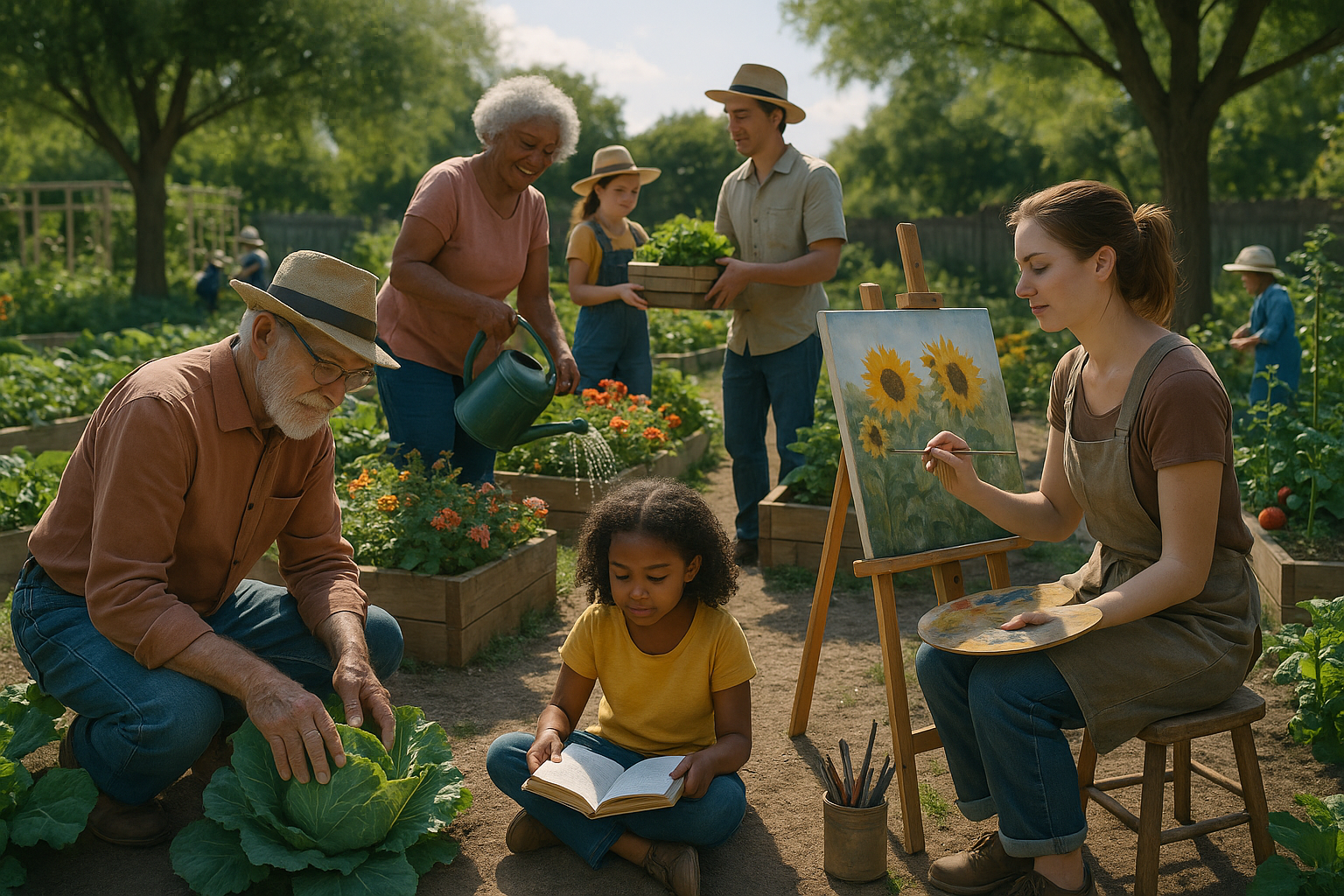From Awareness to Action
Recognizing the influence of the dominant paradigm is only the first step. To truly step beyond it, we must actively live the alternative – not just think about it. This shift requires conscious daily practices, lifestyle changes, and reimagining how we relate to work, community, and the natural world.
In this article, we will explore practical ways to break free from old conditioning and integrate more regenerative, sustainable, and soulful ways of living into our daily lives.
🎥 Prefer to listen or watch? This short video explores the same ideas and offers gentle encouragement to begin living the alternative – on your own terms.
1. Redefining Work and Success
To break free from productivity-driven worth, we must redefine success in ways that align with meaning, balance, and well-being.
A. Shift from Hustle to Purposeful Work
- Identify what kind of work feels fulfilling and regenerative rather than draining.
- Move toward work that feels aligned with your values, rather than just chasing financial gain.
- Consider alternative economic models such as cooperatives, slow business, or skill-sharing communities.
B. Embrace a New Definition of Success
- Instead of external markers of achievement (money, prestige), measure success by depth of relationships, creative fulfilment, and personal growth.
- Prioritize inner peace and joy over external validation.
- Accept that life moves in cycles of growth and rest – not constant upward progression.
2. Cultivating Community and Interdependence
Breaking away from hyper-individualism means reconnecting with mutual support networks and building relationships based on collaboration instead of competition.
A. Foster Stronger Local Connections
- Engage in community-led initiatives such as co-ops, time banks, or local food movements.
- Prioritize relationships built on trust, reciprocity, and shared values.
- Offer help and accept help without guilt – interdependence is natural and necessary.
B. Shift from Consumer to Creator
- Instead of buying everything, learn to create, repair, or trade.
- Participate in sharing economies (borrowing, lending, gifting) rather than defaulting to ownership.
- Find ways to contribute skills rather than just consuming services.
3. Living in Harmony with the Natural World
To reject the extractive mindset, we must rebuild our relationship with nature as a reciprocal and sacred connection, not just a resource.
A. Embrace Slow Living and Seasonal Rhythms
- Align your activities with the natural cycles of rest and renewal.
- Recognize that periods of stillness are just as valuable as periods of productivity.
- Spend time outdoors without an agenda – observe, listen, and learn from nature.
B. Adopt Regenerative Practices
- Reduce reliance on industrial systems by growing food, composting, and conserving energy.
- Support ethical, sustainable businesses rather than extractive corporations.
- Treat all resources with care, recognizing that everything we take must be replenished.
4. Developing Inner Awareness and Resilience
Shifting away from deeply ingrained conditioning takes time, self-awareness, and emotional resilience. Here’s how to cultivate it:
A. Question and Reframe Old Beliefs
- Notice when you feel guilt for resting or shame for not being productive – these are signs of conditioning.
- Regularly ask yourself, “Who benefits from this belief?” If it only serves corporations or systems of control, it may not be serving you.
- Replace old narratives with affirmations of self-worth, sufficiency, and balance.
B. Practice Mindfulness and Reflection
- Engage in daily reflection or journaling to notice patterns and shifts in thinking.
- Cultivate gratitude for what already exists rather than constantly seeking more.
- Recognize that true security comes from adaptability and relationships, not accumulation.
Conclusion: Choosing to Live Differently
Living the alternative is not about escaping society, but about engaging with it differently—on your own terms. This is a lifelong process of learning, unlearning, and adapting.
By redefining success, embracing interdependence, reconnecting with nature, and cultivating deep self-awareness, we create new ways of living that align with soul, community, and sustainability.
Each small step – whether it’s questioning an old belief, growing food, resting without guilt, or forming deeper relationships – contributes to a larger cultural shift beyond the dominant paradigm.
Reflection Questions:
- What’s one small shift you could make this week to live more in alignment with your values?
- Where in your life are you being called to slow down or reimagine success?
- How can you cultivate more connection, both with others and with yourself?
This is not about perfection – it’s about intention, practice, and a willingness to live differently.
This article is part of the series Beyond the Dominant Paradigm. You can begin the journey with the introductory article.
If you’d like to explore these ideas more deeply, download my free guide Walking the Soulful Path when you sign up for my monthly newsletter.
It’s one thing to rethink the dominant paradigm – it’s another to live differently. The Soulful Path to Life Purpose programme is designed to help you put these ideas into practice in a way that feels aligned and meaningful.










